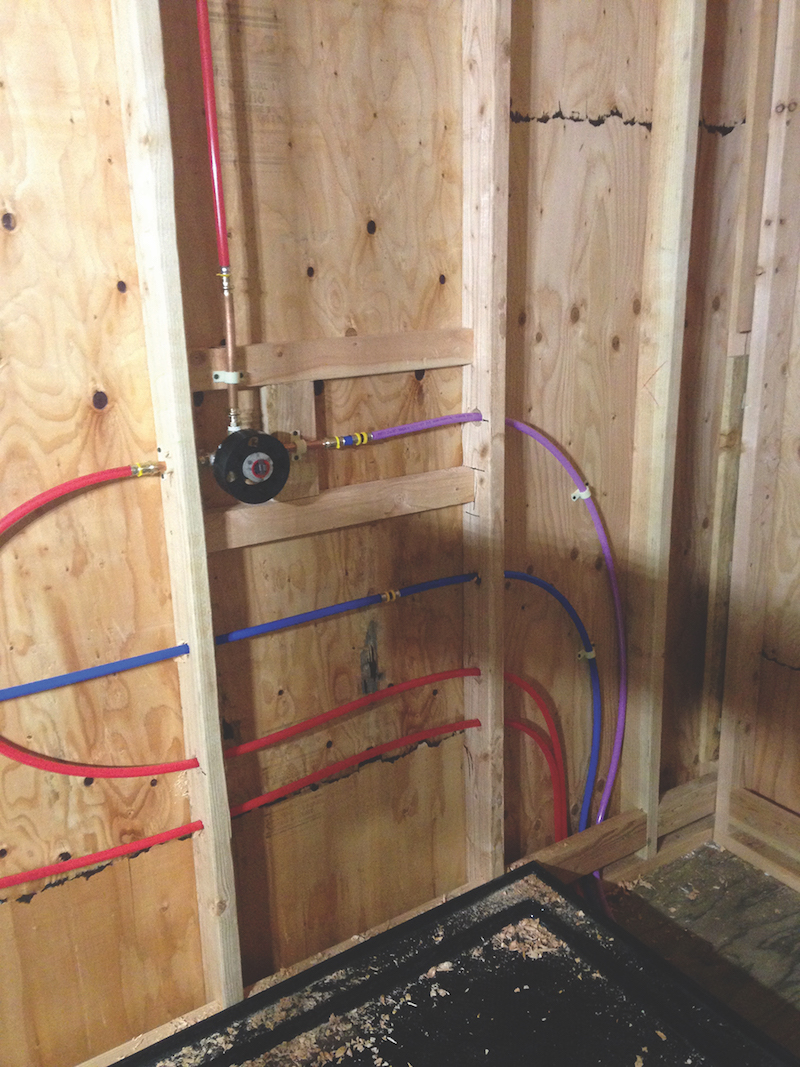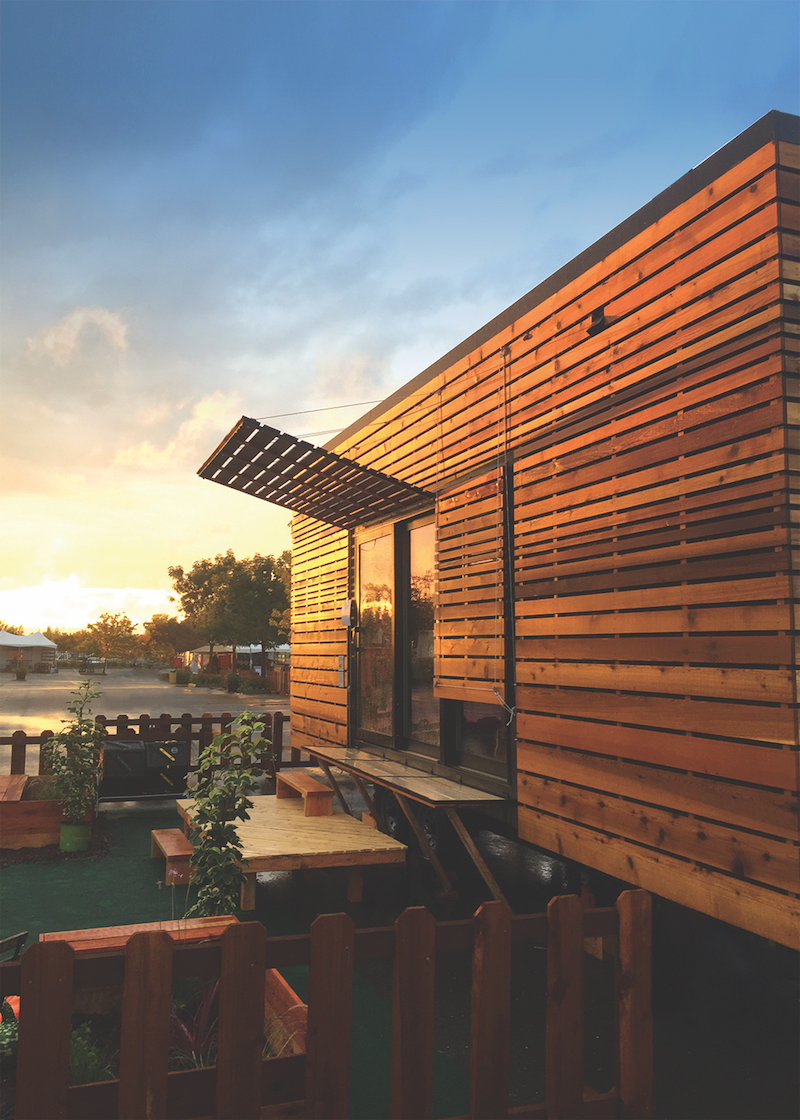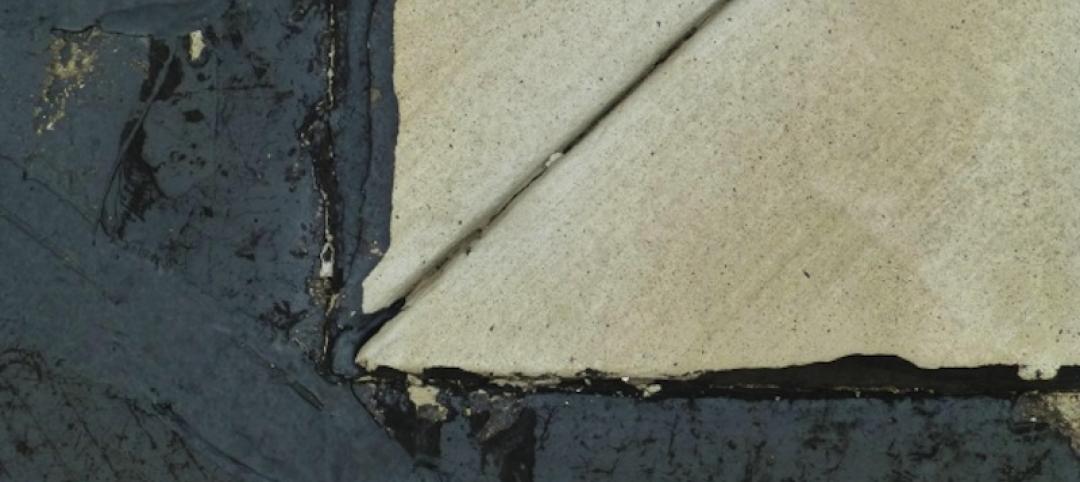The tiny-house craze is huge – TV shows, blogs, daily articles in the news and websites are dedicated to the trend. Now Viega has a hand in it, too – contributing to a tiny-house competition in California. The team from University of California, Berkeley, utilized different Viega products and finished second in the competition, pulling in some other awards as well.
Viega is a member of the Center for the Built Environment (CBE), a UC Berkeley-sponsored scientific research partner, so the collaboration on the tiny house grew from that relationship. Students from the CBE formed a team to compete in the tiny-house building competition, and Viega came on board as a sponsor of the entry, providing products, loaning tools and giving some advice to what became a very successful venture.
The Berkeley team wanted their tiny house to be completely off the grid, able to produce its own energy and use as little water as possible. With efficiency in mind, the team worked to create a system to recycle as much water as they could for a second use.
Laney Siegner, in her third year of the Energy and Resources group PhD program at Berkeley, was one of the project managers and led the design of the water and wastewater systems.
 The team used the Viega PureFlow system.
The team used the Viega PureFlow system.
“Our concept was to pump the greywater to planter boxes on the back end of the trailer/house and then filter it through the planter boxes, through a UV disinfection light, and then recollect it as filtered greywater,” Siegner said. “Our highly ambitious goal was to get the water back to potable, but we couldn’t quite achieve that. We did a lot of testing on it, and there was still a little turbidity, but we determined it was okay for several uses.”
The team made good use of the Viega PureFlow system, installing PureFlow PEX in red and blue for hot and cold potable water, and also purple for reclaimed water, as well as PureFlow Press Polymer fittings. The PEX in ½" and ¾" was utilized on the project, and the team was also able to use a ManaBloc in the mechanical room. They chose to cover it with clear plastic, so the plumbing is still visible in the completed home.
The PureFlow PEX products played a big role in the whole water system, with lots of tubing used not only for hot and cold water output, but to move the greywater through the recycling system.
The idea impressed the judges of the competition, and Berkeley’s team won the award for water conservation, as well as for overall sustainability.
“Viega’s support was essential and extremely important for the success of our project,” said Caroline Karmann, a PhD candidate at Berkeley who served as architect for the tiny house. “The high quality of Viega’s products has been a key aspect in the functionality of our water systems, which is unusual and complex since we are off-grid. We were profoundly lucky to have this collaboration with Viega.”
Read more about this project here.
Related Stories
Sponsored | Plumbing | Nov 13, 2015
Getting the Most Value When You Value Engineer DWV Systems
There are lots of places in a DWV system where value can be captured, but there are applications where what looks like value can mask risks that you might not want to take.
Sponsored | Plumbing | Oct 9, 2015
Porsche luxury meets Viega innovations
Occupants of the Porsche Design Tower on the shoreline of Florida’s Sunny Isles Beach will experience the best view in the city
Sponsored | Plumbing | Aug 18, 2015
Make sure the money you save in VE isn't destroyed in a lawsuit
Getting the PVC vs. Cast Iron choice right
Sponsored | Plumbing | Mar 13, 2015
Viega ProPress for stainless looks good at UNH
One of the oldest buildings on the University of New Hampshire (UNH) campus, Huddleston Hall is a multipurpose facility, which includes dormitories, classrooms and an event center.
Building Materials | Feb 19, 2015
Prices for construction materials fall in January, following plummet of oil prices
The decline in oil and petroleum prices finally showed up in the produce price index data, according to ABC Chief Economist Anirban Basu.
| Dec 8, 2014
The global sanitation crisis leads to 2.5 million deaths every year
When we see the incredible technology being produced by global plumbing manufacturers, it’s hard to conceive why no viable technical solution to the global sanitation issue has come forth, writes BD+C's Robert Cassidy.













